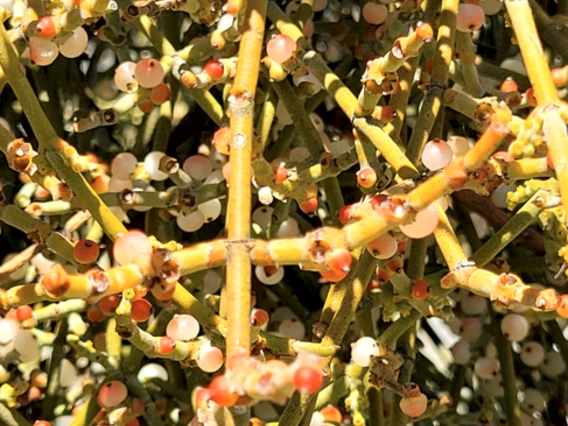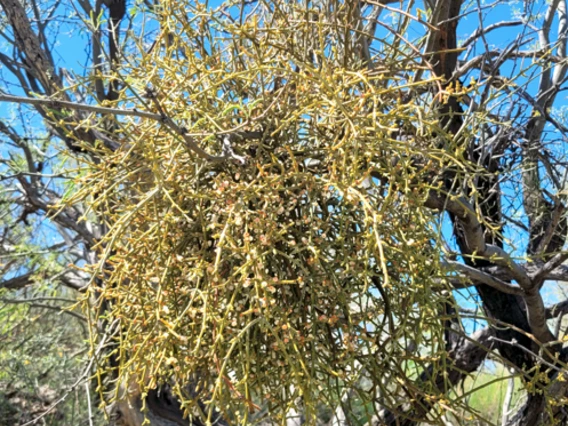Family: Santalaceae
Compound: Pho cal
Synonyms: Phoradendron californicum var. distans, P. californicum var. leucocarpum
Geographic Origin: southwestern US, northern MX
Characteristics: A perennial evergreen shrub that grows as a hemiparasite on various host trees, predominantly on species of mesquite. It forms dense clumps of branching stems that can be up to 5cm (2in) diameter, with small, scale-like leaves that are almost unnoticeable without close inspection. The stems are green and photosynthetic, though they can turn red due to sun stress. Mesquite mistletoe produces small, sticky berries that are white to red in color, appearing from late winter to early spring.
Natural History: Phoradendron californicum is native to the arid and semi-arid regions of the southwestern United States and Mexico, commonly found in desert environments where its host trees, such as mesquite, are prevalent. The berries are eaten by birds such as Phainopepla, and when excreted by the bird, remain sticky which allows them to hold onto the branches on which they were deposited so they can germinate.
Cultivation Notes: As a parasitic plant, mesquite mistletoe does not require traditional soil cultivation but instead grows on the branches of host trees from which it derives water and nutrients. Control in landscape settings generally involves the physical removal from host trees to prevent excessive stress on the host or potential spread, though they are beneficial to wildlife, especially birds, so complete removal is not recommended.
Ethnobotany: Used to treat stomach aches and to clean sores. While generally not used in formal landscaping due to its parasitic nature, it may be found in landscaping after birds deposit seeds on tree branches.
Citations:
The American Southwest. Retrieved April 30, 2024.
SEINet Arizona – New Mexico Chapter. Retrieved April 30, 2024.





